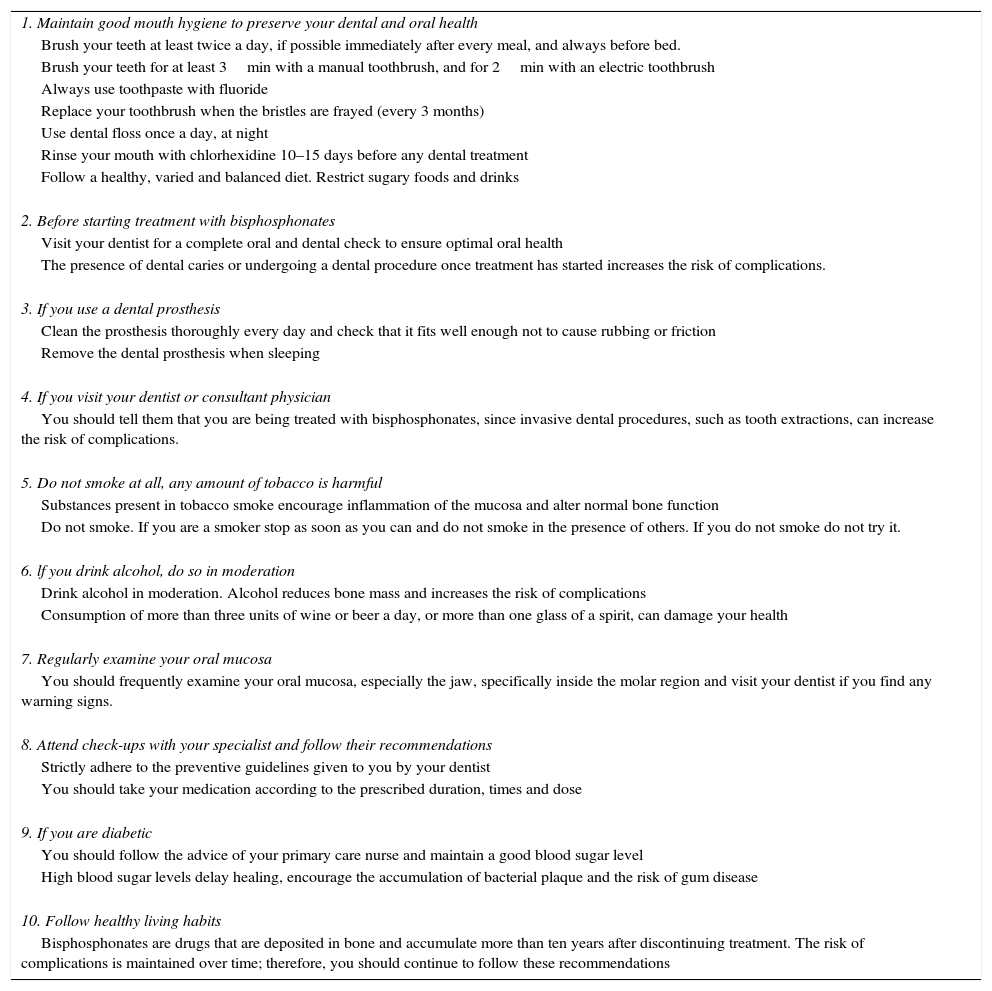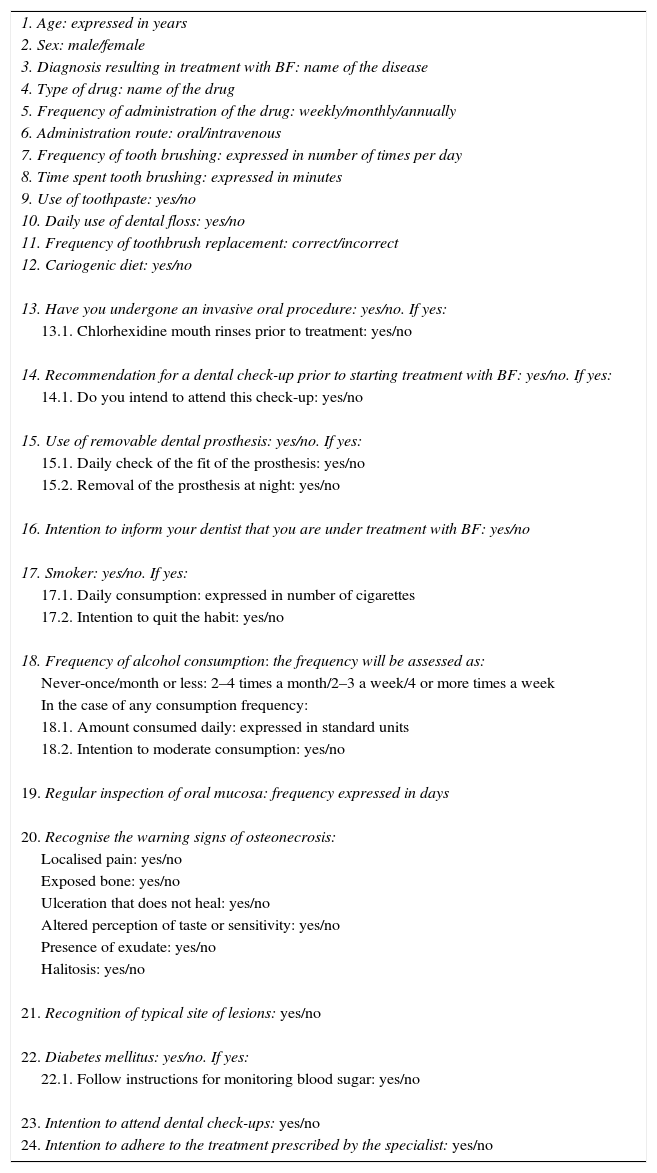To evaluate the effectiveness of a health education programme on knowledge and reduction of the risk factors for bisphosphonate-related osteonecrosis of the jaw.
MethodsAn experimental study control group without intervention was performed with 60 subjects who had started treatment with bisphosphonates in the University Hospital of León from October to December 2014. Patients in the experimental group received a structured education intervention in two sessions. The data was collected from a heteroadministered questionnaire at the beginning and at the end of the study period for both groups.
ResultsThe educational intervention designed showed a significantly increased adherence to healthy behaviours related to oral hygiene such as mechanical control of plaque and the use of clorhexidine prior to invasive oral procedures. All subjects reported that they had not been advised to maintain a good level of oral health before starting treatment. After the intervention high percentages of recognition of early diagnostic measures starting from a baseline total ignorance of them were determined. No conclusive information about the use of removable dental prostheses, toxic habits or maintaining proper metabolic control in patients with diabetes mellitus was observed.
ConclusionsImproving adherence to healthy behaviours related to oral health following the intervention, as well as their contribution to the early identification of warning signs of jaw osteonecrosis, stresses the importance of the use of health education as a tool in routine clinical practice.
Evaluar la efectividad de un programa de educación para la salud sobre el conocimiento y modificación de los factores de riesgo de aparición de osteonecrosis maxilar en pacientes tratados con bisfosfonatos.
MétodoEstudio experimental del tipo «grupo control sin intervención», con 60 pacientes que iniciaron tratamiento con bisfosfonatos en el Hospital Universitario de León de octubre a diciembre de 2014. Los pacientes pertenecientes al grupo experimental recibieron una intervención educativa estructurada en dos sesiones. La recogida de datos se llevó a cabo mediante un cuestionario heteroadministrado, al inicio y al final del período de estudio, para ambos grupos.
ResultadosLa intervención educativa diseñada mejoró significativamente la práctica de medidas básicas de higiene oral, como el control mecánico de la placa y el uso de clorhexidina previa a procedimientos orales invasivos. Ningún paciente declaró haber sido advertido de la necesidad de poner su boca en salud antes del inicio del tratamiento. Tras la intervención se determinan porcentajes elevados de reconocimiento de medidas de diagnóstico precoz partiendo de una situación basal de desconocimiento total de las mismas. No resultaron concluyentes los datos recogidos sobre el uso de prótesis dental, hábitos tóxicos o control metabólico en pacientes con diabetes mellitus.
ConclusionesLa mejora de la adhesión a conductas saludables relacionadas con la salud bucodental tras la intervención educativa, así como su contribución a la identificación precoz de los signos de alarma de osteonecrosis maxilar, remarca la importancia del empleo de la educación para la salud como herramienta en la práctica clínica habitual.












